Tag: training
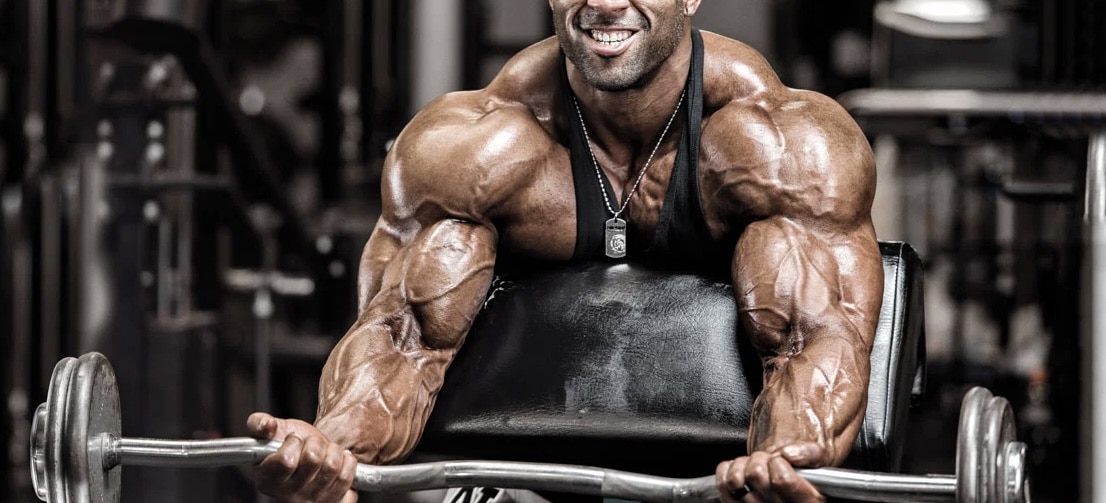
An Arm Workout You’ll Feel Until Next Week
The arm workout you will write home about.
Let’s be honest. Everyone loves training arms. Some bros (to look like total badasses) might say that legs are their favorite muscle group to train but push them a little, and they will tell you arm workouts run a close second. And at this point, you will know the truth.
We hate to break this to you, but there is no “alpha male“ without jacked muscles. A pair of ripped pythons can make you stand out. Jacked arms are symbolic of strength, look aesthetically appealing, and garner attention, whether in the workplace or on the street.
Although you might see people in your gym training their arms more than twice a week and flexing their guns at every chance they get (yes, even on leg days), but only a very few lifters have pythons that the Greek gods would approve.
Mostly, the reason behind lagging arms development is not a lack of training equipment or intent but a dearth of correct training techniques. If your arm workouts only consist of a few bicep curls and tricep pushdowns, do not be surprised if your tiny wigs never grow into venomous pythons.
Also Read: 5 Ways To Bring Up A Lagging Body Part
Workout Principles For a Kickass Arm Workout
Arms are a relatively smaller muscle group. While you do not need as much intensity while training your guns as you would while training your lower body, do not use this as an excuse to show them mercy. Here are the principles you should be following during your arm workout:
1. Antagonistic Supersets
Lifters tend to train their favorite muscle group at the beginning of a workout. While some people train biceps at the beginning of their arm workout, others start with triceps.
The problem with this technique is that by the time you get to training your weaker muscle group, you are fatigued, and do not have enough gas left in the tank to break new ground.
Not only do antagonistic supersets lay the groundwork for biceps and triceps muscular balance, but they also are time efficient.
2. Hypertrophy
Hypertrophy refers to an increase in muscular size achieved through exercise. To achieve hypertrophy, you should perform 12-15 reps per exercise and not rest more than 60-90 seconds between sets.
In this arm workout, you will not be stopping for rest between exercises while performing the antagonistic supersets.
Remember: Do not lift a weight that is too light, as that will not allow you to see the same gain of definition.
Related: 5 Ways To Write a Great Training Program
3. Rest-Pause Sets
Most individuals usually perform 12-15 reps in a set. After a few training sessions, people get a good idea of how much weight they need to be lifting to hit failure by 12-15 reps.
While there is nothing wrong with this technique, you need to remember that we are on a mission to remain sore until our next arm workout. We want to push our arms to their limit.
Rest-pause sets give your ATP (adenosine triphosphate) reserves enough time to replenish so that you can perform an additional 5-10 reps without getting you out of hypertrophy.
Muhammad Ali explained this the best when he said:
“I don’t count my sit-ups; I only start counting when it starts hurting because they’re the only ones that count.”
Also Read: How To Increase The Time Under Tension To Maximize Your Gains
4. There Are No Accessory Muscles in This Arm Workout
Forearm training is an afterthought in most arm workouts, but this routine is unlike most regimens. Bodybuilding is a game of illusions. Muscular forearms and small joints (if you have them) can give an illusion of bigger arms. Stick with this arm workout for 12 weeks, and you might end up looking like The Hulk – at least in the arms department.
Check Out: Advanced Training Techniques To Take Your Gains To The Next Level
5. Mind-Muscle Connection
Bodybuilding is not about lifting as heavy as you can or just going through the motions for the sake of it. If you want your biceps to look like mountain peaks and triceps to resemble horseshoes, you need to focus on contracting your muscles with every rep.
The better your mind-muscle connection, the more muscle fibers you will be recruiting during your exercises. A higher degree of muscle activation also means that you lower the chances of injuries during your sets.
You should not turn your rest periods between sets into dead time. Utilize that time to flex your muscles as hard as you can and hit your favorite poses.
Related: 6 Ways To Improve Your Mind-Muscle Connection
6. Shock Your Muscles Into Growing
Your muscles stop responding when they get used to your workouts. Contrary to popular opinion, you do not always need to perform new exercises to stimulate muscle growth.
If you perform the arm workout laid out in this article for eight straight weeks (which you should), you could add variety to your workouts by switching the number of sets, reps, and advanced training techniques. Never perform the exact same workout for more than three weeks on a stretch.
With all said and done, here is a simple gauge to find out if your arm workout was a success: are you able to touch your right shoulder with your right hand? If yes, then you did not go hard enough. Keep taking this test between your sets to check how you are doing.
Must Read: This is How Your Training Should Change as You Get Advanced
8 Week Arm Workout From Hell
As Big Ramy would say, “the winter is here.”
If you have lagging arms, the “bulking season” is a great time to work on them. Carve them while they are under wraps, and come out brandishing your polished guns when the sun is out.
1. Superset
(a) Standing Bicep Cable Curl: 3 sets 12-15 reps, no rest
Steps:
Adjust the pulley to the lowest setting.
Attach a straight bar to the pulley.
Grab the bar with a supinated (palms facing up) grip and stand upright with a shoulder-width stance.
While keeping your elbows pinned to your sides, curl the bar toward your chest.
Hold and contract your pythons at the top for a couple of seconds.
Return to the starting position with a slow and controlled motion.
Repeat for recommended reps.
(b) Straight Bar Tricep Pushdown: 3 sets 12-15 reps, 30-60 second rest
Steps:
Attach a straight bar to a cable stack as high as possible.
Stand with an upright torso in a shoulder-width stance.
Grasp the straight bar with a pronated grip (palms facing down) and lean forward slightly by hinging at the hips.
Initiate the movement by extending your elbows and flexing the triceps.
Pull the handle down until your elbows are almost locked out.
Squeeze the life out of your triceps at the bottom of the movement.
Return to the starting position with a controlled motion.
Repeat for repetitions.
Rest-Pause: 10 seconds 8-10 reps
Every exercise in this workout routine (except forearm lifts) includes a rest-pause set. Meaning – after performing 12-15 reps of an exercise, rest for 10 seconds, and then perform 8-10 more repetitions of the same movement with the same weight before moving onto the next lift.
2. Superset
(a) EZ Bar Skullcrusher: 3 sets 12-15 reps, no rest
[embedded content]
This is no accident. You will be alternating between biceps and triceps as the first exercise of your supersets. This technique will ensure that you are training both muscle groups with the same intensity.
Steps:
Choose your desired weight and sit on the edge of a flat bench with the EZ bar on your lap.
Lay back while lifting the bar to your chest.
Once in position, press the bar until your arms are fully extended and perpendicular to the floor.
While keeping your elbows pinned in position, lower the weight towards your forehead by lowering your forearms.
Once you are a few inches away from your forehead, reverse the movement by extending your elbows while flexing the triceps to lock out the weight.
Repeat for the desired number of repetitions.
(b) Zottman Curl: 3 sets 12-15 reps, 30-60 second rest
[embedded content]
Steps:
Hold a pair of dumbbells by your sides with your palms facing each other.
Curl the weights up to your shoulders, keeping your upper arms still and turning your hands so your palms face up as you lift.
Pause at the top of the movement and slowly rotate your grip so your palms are facing downwards.
Lower the dumbbells slowly back to the starting position using the overhand grip.
When the dumbbells are close to your thighs, turn your hands so that your palms are in the starting position facing one another.
Rest-Pause: 10 seconds 8-10 reps
3. Superset
(a) Barbell 21s: 3 sets 12-15 reps, no rest
[embedded content]
Steps:
Stand upright with a shoulder-width stance.
Grab a barbell and hold it in front of your thighs.
While keeping your elbows pinned to your sides, curl the barbell to the halfway point (up to your belly button).
Return to the starting position and complete seven repetitions with this range of motion.
Without pausing, curl the same weight all the way to the top, then lower the weight to the halfway point and back up again. Perform this for 7 reps.
Finally, perform 7 reps of full barbell curls from the bottom to the top.
(b) Dumbbell Kickback: 3 sets 12-15 reps, 30-60 second rest
[embedded content]
Steps:
Position yourself on the left side of a flat bench with your right knee and right hand resting on the bench.
Using a neutral grip, pick up the dumbbell with your left hand. Keep your back straight and look forward.
Tuck your left upper arm close to your torso and bend at the elbow, forming a 90-degree angle with your upper arm and forearm. This is the starting position.
Moving only at the elbow, raise the dumbbell behind you until your arm is fully extended.
Pause, and then lower the dumbbell back to the starting position.
Repeat this movement for desired reps before switching sides.
Rest-Pause: 10 seconds 8-10 reps
4. Superset
(a) Single-Arm Overhead Extension: 3 sets 12-15 reps, no rest
Steps:
Stand upright in a shoulder-width stance.
Grab a dumbbell with one hand and position it behind your head with the elbow flexed to 90-degrees.
Place your other hand on your side or abdomen for stability.
Press the dumbbell upward until your arm is fully extended.
Pause and contract your tricep at the top of the movement.
Repeat for recommended reps before switching sides.
(b) Dumbbell Hammer Preacher Curl: 3 sets 12-15 reps, 30-60 second rest
[embedded content]
Steps:
Grab a dumbbell in each hand and sit on a preacher bench.
Keeping your elbows flexed and your palms facing each other (neutral or hammer grip), place the backs of your upper arms flat on the pad.
Lower the dumbbells in a slow and controlled motion until your arms are fully extended.
Curl the dumbbells back to the starting position explosively.
Pause and contract your pythons at the top of the movement.
Repeat for reps.
Rest-Pause: 10 seconds 8-10 reps
5. Superset
(a) Supinated Grip Pull-Up: 3 sets 12-15 reps, no rest
Steps:
Grab the pull-up bar with your hands roughly shoulder-width apart and your palms facing towards you.
Bring your shoulder blades down and contract your lats and biceps to pull up until your chin rises above the bar.
Pause at the top and squeeze your biceps.
Slowly return to the starting position and repeat.
(b) Diamond Push-Up (weighted): 3 sets 12-15 reps, 30-60 second rest
Steps:
Get on all fours with your hands together under your chest.
Position your index fingers and thumbs so that they are touching, forming a diamond shape.
Extend your arms so that your body is elevated and in a straight line.
Lower your chest towards your hands while ensuring you do not flare your elbows out to the sides.
Stop when your chest is a few inches away from the floor.
Return to the starting position explosively.
If the bodyweight version of this exercise feels too easy, feel free to add resistance by getting someone to place a weight plate on your upper back.
Rest-Pause: 10 seconds 8-10 reps
6. Triset
(a) Pull-Up Bar Hang (Dead Hang): 3 sets failure, no rest
Steps:
Use a step or bench so you can easily reach the bar. You shouldn’t jump into a dead hang.
Grab the overhead bar with a shoulder-width overhand grip.
Hang on to the bar while keeping your arms straight.
Hang for as long as you can.
(b) Farmer’s Walk: 3 sets 30 seconds, no rest
Steps:
Grab a dumbbell in each hand.
While standing tall, keeping your shoulders, back, and core tight, walk at an even pace for 30 seconds.
(c) Behind Back Cable Wrist Curl: 3 sets failure, 30-60 second rest
Steps:
Attach a straight bar to a low pulley.
While facing away from the pulley, squat down, and grab the bar with a pronated grip.
Squat back up and stand with a shoulder-width grip.
While keeping your arm straight, slowly open your hands and let the bar slide from inside your palms to the tip of your fingers.
Return to the starting position by clenching your fists so that the bar is raised into your palms.
Curl your wrists and hold for a count of two.
Return to the starting position and repeat for the desired number of repetitions.
Conclusion
Disclaimer: It is absolutely normal for your arms to cramp up during the day after you perform this brutal arm workout. Get accustomed to the pain, and it will not be long before you put on an inch on your arms. Good luck!
How often do you train your arms? Let us know in the comments below.
Also, be sure to follow Generation Iron on Facebook, Twitter, and Instagram.
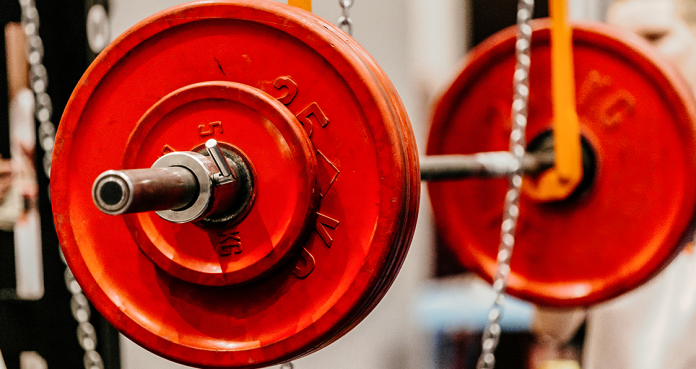
Why You Should Stay Away From The Barbell
Stay Away From The Barbell
Barbell exercises have been a symbol of badassery for a long time. “How much do you bench?” is casually thrown around in the gyms all around the world. Many people are always on the quest to increase their 1RM (one rep max).
“Why?”, you ask? Because, as the broscientists put it; if the rod ain’t bending, you’re just pretending. Barbells are great if you’re just starting to lift weights because they can correct your form. Compound movements with barbell also help in increasing your core strength.
There is no doubt, barbell can be really helpful in building muscle mass and strength, but it comes with a price. This is why you should stay away from the barbell.
Increases The Chances Of Injury
Compound exercises using a barbell can shoot up your chances of an injury since multiple joints are involved. For eg – in an exercise like the squats, your legs are the focus muscle group but you might recruit your lower back while performing the movement.
Supporting muscles will always be weaker than the primary muscles. This puts you at the risk of an injury. The three exercises where most injuries happen are the barbell bench press, squats, and deadlifts.
It is especially important for a person with a record of injuries to stay away from the barbell. There is an alternative exercise or a variation of these exercises you can perform while significantly reducing the chances of an injury.
2. Play Safe With The Dumbbells
If you’re looking for a substitute for the barbell, dumbbells are your best bet. Dumbbells help you do all the exercises you perform with a barbell while reducing the chances of an injury.
Using dumbbells can also help you improve your range of motion resulting in a better development of muscles. If you’re suffering from joint pains or an injury, you should switch to using dumbbells.
Many pro athletes like Kris Gethin have almost eliminated the use of barbell in their training routines. If you plan on staying in the fit lifestyle for an extended period, do yourself and your joints a favor and start working with dumbbells.
3. Squeeze Your Way To Growth With Cables
Cables are an incredibly effective isolation exercise which can help in getting muscle ripping pumps. Apart from the good feeling, bodybuilders chase a pump because all the nutrients travel to your focus muscle group through blood.
The muscle building macronutrient, protein travels through the blood to your target muscle and helps in repairing and developing the muscle. Add a cable exercise in your workouts to optimize your muscle growth.
Using cables makes sure there is constant tension on your muscles throughout the movement. On the barbells and dumbbells, your muscles are worked on the concentric (flexing) movement and all the tension is released on the eccentric (downward) movement.
4. Avoid Muscle Imbalances
It is no secret one of your sides is stronger than the other. For a right-hander, his right side might be stronger than his left, and a left-hander might be stronger on his left side.
Using a barbell can make your muscle imbalances more prominent as your stronger side might take over while performing an exercise with the barbell. Your body does this to compensate for the weaker side.
Using dumbbells, on the other hand, makes sure both your sides are equally used. You can even work on your weaker side by performing unilateral exercises. Unilateral exercises involve working one side at a time. This helps in focusing on and developing the weaker side.
Do you agree with this approach of training? Let us know in the comments below. Also, be sure to follow Generation Iron on Facebook and Twitter.
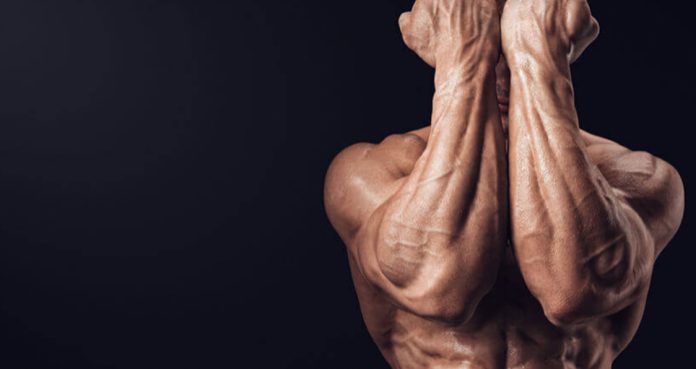
The 4 Most Common Lagging Body Parts and How To Fix Them
The Four Most Common Lagging Muscle Groups
Most people have muscle imbalances due to their genetics. A couple of their muscle groups will be laggings as compared to the other muscles. These people make the situation worse by overlooking these muscles or by not training them optimally.
If you go to gyms looking for the most common lagging muscle groups, you are most likely to find a pattern. Since you’re reading this article, we assume you have a lagging muscle group or two which you want to bring up to par.
Calves
Calves are one of the most common weak muscle groups. They also make it to the top of the most stubborn muscle group list. Unlike your upper body muscles, hiding your weak legs is easy. Bros with chicken legs cover them up with baggy track pants.
Training your calves can be different from the other muscle groups. You stand on your calves for the entire day and use them for moving from one place to the other. Your calves can recover quickly from your workouts and you can train them multiple times a week.
Rear Delts
Rear delts are a weak muscle group for most people. We’re sure most people aren’t even aware of their existence. Since the rear deltoids are on your back, it is hard to establish a mind-muscle connection with them since you can’t look at them in the mirror while training.
Rear deltoids are a hard muscle to train. Most people stick to a single exercise for training their posterior delts. You should add variations and target your rear delts from different angles in every workout.
Forearms
Most people spend way too much time training their arms and completely ignore their forearms. Muscular forearms can add to the size of your arms. Your bicep and triceps workouts aren’t enough to develop your forearms.
You need to train your forearms with compound and isolation exercises. Add forearm exercises to your arm days. You could also get hand grippers to train your forearms while you’re sitting idle.
Neck
Only a few other things look more awkward than a guy with big muscles and a tiny neck. If you have never trained your neck, it is time you start. You need to be extra careful while training your neck since it is one of the more delicate muscles.
Lie facedown on a flat bench and use a strap to lift a quarter plate. Move up to heavier weights as your neck gets stronger. Watch the video below to learn a few neck building tips from Mike Tyson.
[embedded content]
Grow Your Weak Muscle With These Tips
1. Train Them At The Beginning of Your Workout
If you look closely, all these muscle groups are usually trained at the end of workouts. You are fatigued by the end of your workouts. You should train your weak muscles at the beginning of your workouts since you’re full of energy and stamina.
2. Train Them Twice a Week
Since these are small muscle groups, they take relatively shorter time to recover from your workouts as compared to the bigger muscles. Schedule your workouts so you have 48 hours before you train the same muscle again.
3. Use Advanced Training Techniques
Most people stick to the same exercises for the lagging muscle groups. You need to constantly change your exercises to shock your muscles and keep them guessing. Use advanced training techniques like supersets, drop sets, intraset stretching to take your workouts to the next level.
Do you have a weak muscle group? Let us know in the comments below. Also, be sure to follow Generation Iron on Facebook and Twitter.
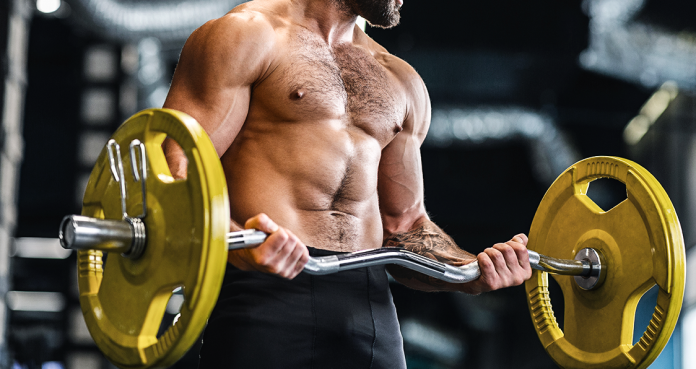
A Full Body Workout Reserved For Legends
The Best Full Body Workout You Can Do
If you have been wondering why you don’t look like the pros, it’s because you’re not training like them. you can’t follow a vanilla five exercises, three sets each routine and expect to get in the best shape of your life.
To achieve extraordinary gains, you need to do extraordinary things in the gym. Fully body workouts can be the hardest as you need to annihilate all your muscles in a short amount of time.
Clean and Press – 3 Sets 15 Reps
You’ll be starting the workout with the clean and presses. You must give these exercises all you’ve got as you’ll be performing one exercise each for every muscle group. You don’t want to be leaving gains on the table by half-assing any of these exercises.
The clean and presses are a great full-body exercise to do at the beginning of your workout. Make sure you’re following a full range of motion and are not using any momentum while performing the exercises.
Superset
Bench Press – 3 Sets 12-10-8 Reps
Tricep Cable Pressdowns – 3 Sets 12-10-8 Reps
In a full-body workout, we make use of supersets to target the helping (secondary) muscles to make the workouts more effective. You’ll be performing the bench press in this workout to train your chest.
After the bench press, you’ll go straight into the tricep cable pressdowns and make the most of the existing tension on your triceps caused by the benching. You need to contract your muscles with every rep to fill your muscles with blood and lactic acid.
Squats – 3 Sets 20 Reps
Squats are the ultimate leg builders. As you reach the squat rack, fatigue should start to creep in. The goal with the squats is not to lift heavy weights, but to get the 20 repetitions with the perfect form.
Focus on getting a pump in your quads as you do the squats. If you have problems (read – injury) in performing the orthodox barbell squats, you can instead do the goblet or hack squats.
Seated Arnold Press – 3 Sets 15-12-10 Reps
Arnold presses were invented by the Governator. The Arnold presses are better and more effective than most of the shoulder exercises as they work the medial and anterior deltoids.
Keep your ego in check and use weights that you can lift with a full range of motion. Your palms should be supinated and in front of your shoulder at the bottom of the movement. Turn your wrists outwards as your lift the dumbbell over your head so that your palms are pronated at the top of the movement.
Superset
Bent-Over Barbell Rows – 3 Sets 12-10-8 Reps
Dumbbell Curls – 3 Sets 12-10-8 Reps
You need to hit your back with the right intensity and form to get the most out of your exercises. Focus on squeezing your lats together as you lift the barbell to your abdomen. Stretch and expand your back as you return to the starting position.
We have saved the best for the last as dumbbell curls are arguably the most loved exercise in bodybuilding. Pro tip: rotate your wrist outwards at the top of the movement to work on the peak of your bicep.
How often do you perform full-body workouts? Let us know in the comments below. Also, be sure to follow Generation Iron on Facebook, Twitter, and Instagram.
Header image courtesy of Envato Elements

How To Tell If You’re Overtraining
Symptoms of Overtraining
Overtraining is one of the most misunderstood concepts in bodybuilding. The word ‘overtraining’ is casually thrown around in gyms by broscientists warning people who are working too hard.
Most of these broscientists don’t understand what overtraining means. You don’t have to worry about overtraining if you perform a few more reps and sets once in a while. Overtraining isn’t easy, you have to push yourself to the limits to overtrain your body. Your body can take much more than you can imagine.
Weak Nervous System
Here is the Wikipedia definition of overtraining; “Overtraining is the result of giving your body more work or stress than it can handle. Overtraining occurs when a person experiences stress and physical trauma from exercising faster than their body can repair the damage.”
Your central nervous system takes a big hit if you overtrain. You will find yourself falling sick often as your immune system weakens. If you are keeping ill and can’t understand the reason, you should consult a doctor.
Prolonged Muscle Soreness
Your recovery takes a big hit if you’re overtraining. Your muscles might be sore even after a relatively light workout. The soreness might remain for more than a couple of days which can affect your other workouts.
Taking recovery supplements is a good way of handling muscle soreness. Your muscles only repair when they are properly rested. Soreness is a sign that your muscles aren’t recovering, which can set you back on your muscle-building journey.
Exhaustion
Overtraining can make you feel exhausted all the time. If you have been overtraining, you will feel tired even when you wake up in the morning. Extended exhaustion periods can lead to many other problems like loss of concentration, motivation, and depression.
If you’ve been feeling exhausted for no particular reason, it’s a good idea to stay away from the gym for a couple of days. You definitely will return to the gym feeling more motivated than ever before.
Altered Heart Rate
In cases of overtraining, you might also experience altered heart rates. It is a good idea to use a heart rate monitor to analyze your heart rate while working out and throughout the day.
It is normal to have a high heart rate while you’re doing a HIIT workout. But if you’re experiencing an unusually high or low resting heart rate, it is a matter of concern, and you should consult a doctor at the earliest.
Injuries
Overtraining can make you weak which can lead to weaker muscle tissue and joints. If you are overtraining, your body doesn’t get enough time to recover and recuperate from your workouts which can re-aggravating old injuries.
Lifting heavy weights or pushing yourself too hard in the gym can cause frequent injuries. Muscle rehab is your only option if you find yourself in a place like this. Try adding forced rest periods into your routine and change the intensity of your training. If you’re into the active lifestyle, you could try switching to active recuperation sports which are low intensity.
Do you have any symptoms of overtraining? Let us know in the comments below. Also, be sure to follow Generation Iron on Facebook and Twitter.
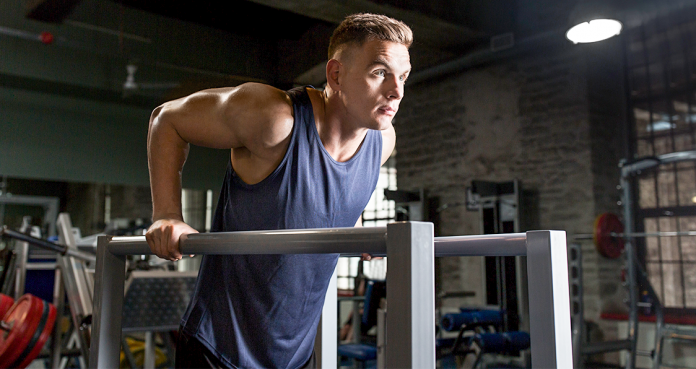
8 Worst Exercises For Building Muscle
The Most Useless Exercises
We recently did an article about the best exercises you could do to build muscle mass. The article got us thinking about the exercises people love doing but which don’t help in budging the needle in the right direction.
Most of the exercises on the list are here because people don’t take out the time to learn the proper form of performing them. You could save yourself time and energy by performing substitute exercises in place of these exercises.
Any Resistance Exercise Done On A Stability Ball
The stability ball came into the limelight with the focus on core training. It’s believed that doing strength training exercises on an unstable surface is going to build muscle and core strength, but no studies have been able to prove it.
Performing exercises involving additional weights are safer done on the floor than using an unstable surface. There is a reason why football games are played with athletes standing on a field of some type, and not a ball or moving surface. To be a pro, train like one.
Ab/Oblique Rotation Machine
Many gyms have a machine that has a revolving base which can be used to train the abs and obliques. People need to stand/sit on it and twist their torsos to train the midriffs. Some people take it to the next level by using weights on the base to add resistance.
The basics of biomechanics state that you need to avoid moving through the terrible triad of lower back movements: simultaneous flexion, rotation, and side bending, especially under loading. Reading just this one line about biomechanics should be enough to make you stop using the rotation machine.
Dips
Although the dips are a great tricep exercise, many people don’t get anything out of it because they can’t establish a mind-muscle connection with the muscle, and can feel no contraction.
Romanian Deadlifts
It’s harder to train the posterior muscles as you can’t see them in the mirror directly. To perform the RDLs correctly you need the right amount of range of motion and bend in your knees which is sometimes too much to ask off a beginner.
Lat Pulldowns
Many people make the mistake of using momentum by swinging back and forth while performing the lat pulldowns. Using the jerking motion takes off tension from your back and puts it on your arms and shoulders.
Upright Rows
The uprights rows need the strictest of forms to optimally work the traps. If you use weights that are too heavy and need to swing back and forth to lift them, you’ll end up performing a weird variation of overhand barbell curls.
Tricep Kickbacks
Even though bis and tris are antagonistic muscles, the triceps don’t get the same love as the pythons. Elevation of your elbow, shoulder, the bend in your back, the distance between your feet, there are too many variables connected with performing the tricep kickbacks correctly.
Lunges
Only a few people perform the lunges correctly. The others either don’t take long enough steps, lunge too shallow, bend at the back or lose their balance. The lunges are best left to the pros.
Which exercise do you hate the most? Let us know in the comments below. Also, be sure to follow Generation Iron on Facebook, Twitter, and Instagram.
Header image courtesy of Envato Elements
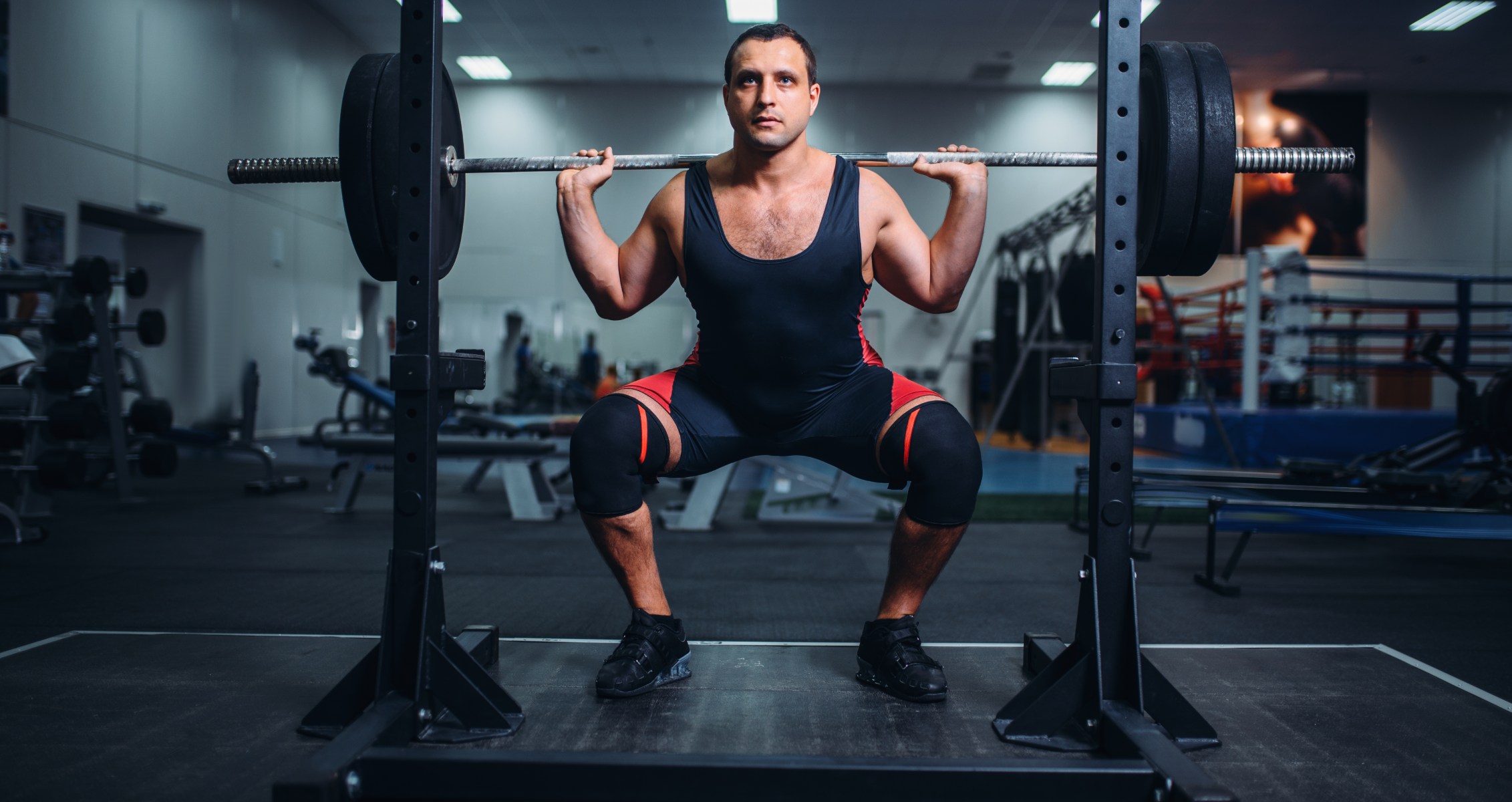
Instantly Improve Your Squats and Leg Gains with these 5 Tips
5 Tips to Improve Your Squats
Chicken legs are probably one of the most common sights to be seen in gyms around the world. It is no secret leg days are one of the most despised days in the life of a bodybuilder. But make no mistake, a pair of shredded wheels is what separates the men from the boys.
Legs are the foundation of your physique. If you want to have a strong upper body, you need to have a rock solid lower body. Leg presses and leg extensions are cute, but it’s the squats which have proven to be the most effective leg builders.
People don’t like to squat since they are hard to perform. Most of the people who do perform them, don’t do it right. In this article, we will help you fix your form so you can reap the most rewards from this exercise.
1. Don’t Bend Your Back
Most people make the mistake of bending their back while squatting. While a normal arch on the way down is okay, it shouldn’t look like you’re performing half squat and half good mornings.
You can use your nose as a pivot point. While you squat your nose should look like you’re jumping straight into a swimming pool. If it looks like you’re diving into the pool, you’re doing it wrong.
2. Keep Your Head Turned Up
Warming up your lower back and legs before a leg workout is always a good idea. If for some reason you have a stiff lower back or hamstrings, you might have a tendency to bend forward. Doing so will put pressure on your glutes and lower back and take off the stress from your quads.
Keeping your head turned up and looking towards the roof can help you in keeping your back straight. The more you keep your back straight, more will be the tension on your quads.
3. Flair Out Your Knees on the Way Down
While squatting, some people push their hips back which brings their back into the movement as they have to bend forward to complete the movement. The right way of performing a normal squat is to push your knees out and going straight down while keeping your back straight.
The right starting position for a normal squat is to have a shoulder-wide stance with your toes pointing out slightly. Imagine as if you were sitting in between your knees. Don’t push your hips back as if you were to sit on a chair.
4. Keep Your Body Tight
Like every other exercise, squatting isn’t about going through the motions. You need to maintain a mind-muscle connection with your quads throughout the movement. Keep your quads tight and squeeze the hell out of them at the top of the movement.
If you want an intense quad pump, perform this exercise with a constant momentum while keeping your body tight. Don’t pause at the top or the bottom and flex your quads at the starting position.
Breathing is another very important aspect of squatting. While you’re at the starting position, take in a deep breath. Hold your breath and keep your core tight on the way down. Breathing out on the way up will help you generate thoracic pressure.
5. Use Accessories
Using accessories in your workouts can improve the results. A weightlifting belt can help you to generate thoracic pressure and will enable you to lift more weight. Knee wraps and sleeves can provide you support on heavier lifts by giving you that extra push from the bottom of the movement.
A Barbell squat pad is another great accessory which many people diss. Greats like Tom Platz used the barbell squat pad, so you should check your ego before stepping into the squat rack the next time.
How much do you squat? Let us know in the comments below. Also, be sure to follow Generation Iron on Facebook and Twitter.
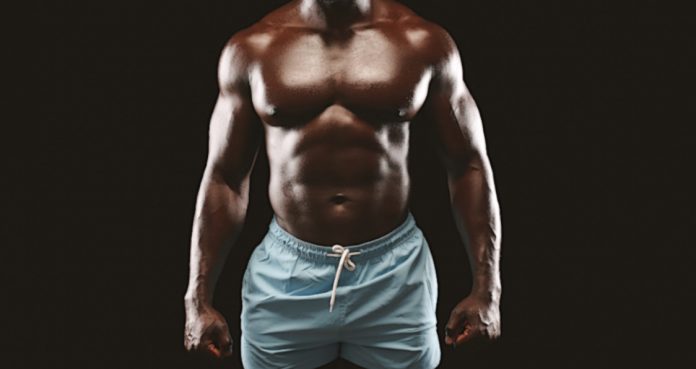
5 Training Tips For Steroid-Free Lifters
Best Advice For Natty Lifters
Many people fail to realize there needs to be a difference in the training styles of people on gear and the natties. Steroid-free lifters hold themselves back by following the programs designed for people on juice.
People on steroids can seem to grow in spite of what they do in the weight room but the steroid-free lifters don’t have it so easy. If you’re a natty who is trying to build up muscle mass, following the tips mentioned below will set you on the fast-track to gains.
Recovery Is The Key
Recovery is one of the biggest areas of improvement for people on steroids. They recover faster and efficiently between sets and workouts. If you’re a natty, you need to make sure your recovery game is on point.
After you have your diet figured out, use inter and intra-workout supplements to take your gains to the next level. Always remember that you break muscle while you’re training and build muscle while you’re resting.
Form Over Ego Lifting
While people on juice can seem to gain muscle mass just by sniffing weights, relying solely on the amount of weight you lift isn’t going to do much for you if you’re not taking the drugs.
Bodybuilding is different from powerlifting. In bodybuilding, it doesn’t matter how much weight is on the bar, the quality and the form of the rep is what gets you the results. Establishing a mind-muscle connection during your sets will improve your muscle recruitment and pumps.
Change-Up The Number of Reps
Most natties make the mistake of following a vanilla training program. You need to constantly shock your muscles if you want to stay on the gains-train. The day your muscles get used to your training style, it’s game over for you.
Experiment with the number of repetitions and sets you perform in your workouts and figure out the combination which works the best. Don’t be afraid of going up to 50 reps and 10 sets while performing an exercise.
Don’t Train To Failure
Many people wear the “I train to failure” badge with pride. While training to failure on every set, exercise, and workout can be great for people on gear, this practice can be a roadblock for natties.
You should pick a weight that is challenging for your muscles but avoid going to failure. While performing a set, leave 1-2 reps in the tank on every set, and it can greatly reduce your chances of overtraining.
Think Outside The Big-3
There is no questioning the effectiveness of the three main compound movements i.e. the bench press, deadlift, and squats but you need to add variety to your workouts by performing other compound and isolation exercises.
Sticking to performing the compound exercises while overlooking the isolation exercises can deprive your physique of conditioning. You need to strike a balance between both types of exercises to get the best of both worlds.
Who is your favorite bodybuilder of all time? Let us know in the comments below. Also, be sure to follow Generation Iron on Facebook, Twitter, and Instagram.
Header image courtesy of Envato Elements
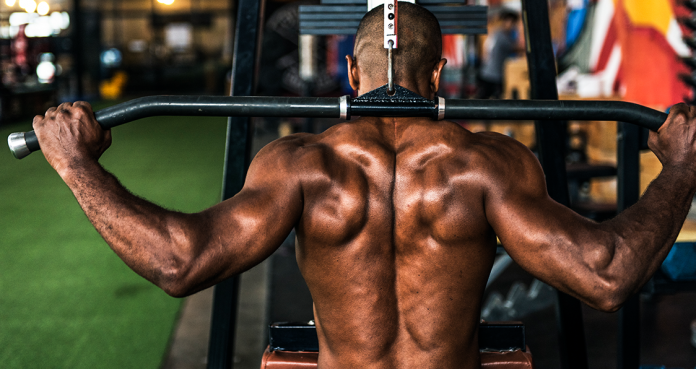
These Are The 7 Most Important Lifts
The Best Seven Exercises You Can Do In The Gym
No two exercises are created equal. In this article, we won’t be getting into the argument if compound lifts are better than the isolation movements. We believe each has its place in your exercise arsenal.
If you’re like most people, you’ll want to make the most of your time in the gym. And how do you do that, you ask? It’s easy, you perform the exercises which are going to give you the best bang for your buck.
Squats
There are no surprises here. Squats are one of the best functional lifts which can add size to your legs and help you in building overall strength. If you have a back injury or can’t perform the barbell squats for some reason, you can try variations like the goblet or hack squats.
Make sure you’re focusing on contracting your muscles with each rep in all of the exercises you perform. Just going through the motions for the sake of it isn’t going to do much for you. Establishing a mind-muscle connection is key to building muscle mass.
Incline Dumbbell Bench Press
For many people, the upper pecs are a weak muscle group. Following a full ROM (range of motion) while performing the incline bench press can help in developing the stubborn muscle group.
If you perform these exercises in your HIIT workouts, 12-15 repetitions will be the optimal rep range. Keep your ego in check and focus on the form rather than the amount of weight on the bar.
EZ-Bar Skullcrushers
The skullcrushers are one of the most effective tricep exercises. Lie down on a flat bench with an EZ-bar in your hands extended at arm’s length so your upper arms are perpendicular to the floor at the starting position.
You need to keep your elbows and upper arms locked in the same place throughout the exercise. The bar should be a couple of inches away from your forehead at the bottom of the movement.
Squats are a must in your training program
Arnold Presses
While most shoulder exercises target a single deltoid out of the three heads, the Arnold presses work the anterior and medial delts. Performing the Arnold presses while sitting on an army bench eliminates the possibility of using momentum.
Deadlifts
Deadlifts are a full-body exercise that primarily targets the back. Performing the compound exercises regularly can improve your mobility, strength, and can help you in doing your day-to-day tasks.
Machine Preacher Curls
While most people love performing the dumbbell curls, they can’t get the most out of them as they lack the mind-muscle connection. Machine preacher curls are an isolation exercise that targets the peak of your biceps.
Hanging Leg Raises
Most people who workout want washboard abs but don’t know how to achieve them. After you have your diet in place, performing exercises like the hanging leg raises will help you bring the definition and symmetry in your abs.
Which is your favorite exercise? Let us know in the comments below. Also, be sure to follow Generation Iron on Facebook, Twitter, and Instagram.
Header image courtesy of Envato Elements
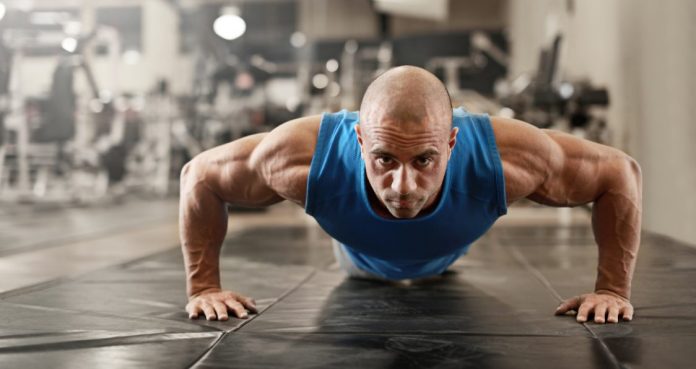
10 Pushup Variations You Need To Try
These are the 10 Pushup Variations You Need To Try
Pushups are one of the first physical exercises most people learn to perform while growing up. Since pushups are a symbol of strength, they are one of the most common physical competitions people engage in around the world.
Although there is a lot more to pushups than many people realize. The traditional pushups target the chest but there are many other variations of this exercise which work other muscle groups.
1. Traditional / Basic Pushups
Everyone needs to start somewhere and the traditional pushups are for the people who are just starting to workout. In this exercise, you lay down facing the floor with your hands placed on the floor at each side of your chest. If this variation is hard for you, you should start with kneeling push-ups or wall push-ups until you build strength.
2. Diamond Pushups
While the traditional pushups primarily work your chest, the diamond pushups are efficient at engaging your triceps more than your chest. In diamond pushups, you form a triangle by joining both your thumbs and index fingers under your chest.
3. Superman Pushups
[embedded content]
Superman pushups are one of the harder forms of pushups. This exercise engages your core and requires shoulder strength. Lie down facing the floor with your arms and legs stretched out. Perform the pushups using your shoulders.
4. Clap Pushups
There are only a few other pushups variations which can increase your strength and explosiveness like the clap pushups. Perform a traditional push-up, explode your way up so your hands are off the ground. Clap your hands while you’re in the air.
5. Spiderman Pushups
You’re wrong if you thought pushups can only engage and develop your chest. Spiderman pushups work your core and help you in developing the obliques. Get into the traditional push-up position, raise your right leg to your right elbow and hold it at this position while you perform a set. Repeat for the left side with your right foot on the floor.
6. One-Armed Pushups
Single-armed pushups have been the symbol of badassery for a long time. One-armed pushups are a unilateral exercise which works one side of your body at a time. Unilateral exercises are great at fixing muscle imbalances and building strength.
7. Incline Pushups
Incline pushups involve the same hand placements as the traditional pushups. This exercise works your lower pecs and triceps. In incline pushups, you have your feets placed on the floor while your hands are placed on an elevated platform like a bench.
8. Decline Pushups
Decline pushups are the opposite of the incline pushups. In this exercise, your feet are placed on an elevated platform while your hands are on the floor. Decline pushups work your upper pecs and shoulders.
9. Weighted Pushups
Weighted pushups can be a variation of all the exercises mentioned in this article. If you find any of the exercises on this list to be easy, feel free to add resistance by using weights.
10. One-Leg Pushups
Single-legged pushups are one of the few pushups variation which involved your lower body. Raise your right leg with your left foot on the floor while you perform a set of pushups. Repeat with the left leg raised and your right foot on the floor. Doing this will recruit your core and abs.
Which is your favourite push-up variation? Let us know in the comments below. Also, be sure to follow Generation Iron on Facebook and Twitter.
